
Guests
- Lonnie Buncheducator, historian and secretary of the Smithsonian Institution since 2019.
As President Trump calls for a “comprehensive review” of eight Smithsonian museums, we feature our 2020 interview with Lonnie G. Bunch III, the head of the Smithsonian. Amy Goodman interviewed him in Washington shortly after the publication of his book, A Fool’s Errand: Creating the National Museum of African American History and Culture in the Age of Bush, Obama, and Trump.
Transcript
AMY GOODMAN: This is Democracy Now!, democracynow.org. I’m Amy Goodman.
President Trump said Tuesday the Smithsonian Institution was too narrowly focused on negative aspects of U.S. history, including, quote, “how bad slavery was,” unquote. Trump’s social media post minimizing the horrors of chattel slavery came after the White House ordered a far-reaching review of Smithsonian museum exhibitions in order to ensure they align with Trump’s interpretation of U.S. history.
In July, the Smithsonian’s National Museum of American History removed references to President Trump’s two impeachments from an exhibit. The Washington Post reports the change occurred during a content review done under pressure from the White House to remove an art museum director. The references were restored earlier this month, though with changes to the prior text.
In a letter to the secretary of the Smithsonian, Lonnie Bunch, the White House writes that the first museums to be reviewed would include the National Museums of American History, of African American History and Culture, the National Museum of the American Indian, among several others.
Well, in early 2020, just before the pandemic, I had the opportunity to sit down with Lonnie Bunch at Busboys and Poets in Washington, D.C., on the occasion of his release of his new book, A Fool’s Errand: Creating the National Museum of African American History and Culture in the Age of Bush, Obama, and Trump.
AMY GOODMAN: Ladies and gentlemen, I present to you the 14th secretary of the Smithsonian.
LONNIE BUNCH III: Miracles do happen.
AMY GOODMAN: So, how does it feel, Lonnie Bunch III, to be the first African American head of the Smithsonian and the first historian leading the Smithsonian?
LONNIE BUNCH III: I think that, for me, being the head of the Smithsonian is my way of thanking Frederick Douglass. In the 19th century, Frederick Douglass was denied the opportunity to speak at the Smithsonian by the secretary of the Smithsonian. So, when I became secretary, the first thought of my mind was: “Way to go, Fred.”
AMY GOODMAN: Wait, wait. You have to tell that story. What actually happened?
LONNIE BUNCH III: So, Frederick Douglass was going to speak, and to speak about abolitionism, and the secretary of the Smithsonian said, “We do not want anybody Black speaking at the Smithsonian.” And Frederick Douglass never spoke there. So, for me, this is about saying this isn’t the same old Smithsonian anymore.
AMY GOODMAN: So, I’d like to go back 21 years ago today, February 4th, 1999. I was actually here working at Pacifica Radio, WPFW, 89.3 FM.
LONNIE BUNCH III: Yes, indeed.
AMY GOODMAN: I had just come from New York, and then we heard the news that a 23-year-old African immigrant, a Ghanaian immigrant named Amadou Diallo, had just been killed in a hail of 41 police bullets. Lonnie Bunch, you talk about your inspirations for the museum and one of the people who inspired you most, back in Chicago, where you were head of the Chicago Historical Museum. Can you tell us about her? And then we’ll talk about the beginning of this remarkable institution that you founded here in Washington.
LONNIE BUNCH III: When I ran a museum in Chicago, I was very close to Studs Terkel, the great oral historian. And Studs would say to me, “Lonnie, here’s some people you should meet.” And one day, he said, “You should meet Emmett Till’s mother, Mamie Till-Mobley.” And I didn’t know she was still alive.
And this woman came to my office. We were supposed to have an hour lunch. She was so short that her feet couldn’t hit the floor when she sat in the chair. And instead of an hour, she spoke for seven-and-a-half hours, told me everything that happened, from the time she kissed her son goodbye to the time she buried her son. And I was crying the whole time. And I decided that I would write something for the Chicago Tribune, saying, “If there’s one person in Chicago you should never forget, it’s Mamie Till-Mobley.”
And we became such good friends. I would go to her house, and we’d talk. And then, one day, she said to me — and you’ve got to see how central Emmett Till was to her life. If you went into her living room, in the middle of the couch was a full-size picture of Emmett Till with that sort of funny little tie of his that we’ve all seen. And so, she said to me, “Lonnie, for 50 years, I’ve carried the burden of Emmett Till. It’s your turn.” And that was on a Saturday. We were going to get together the next week. She was going to Detroit. She died that Sunday.
So I came back to the museum and vowed that the story of Emmett Till, but, more importantly, the story of his mother’s, that courage, that ability to make America see what America didn’t want to see, motivated me to help build this museum.
AMY GOODMAN: Mamie Till-Mobley’s bravery, when this — her 14-year-old boy, her only child, was found in the bottom of the Tallahatchie River, sent back to Chicago in a casket. Her bravery in saying she wanted the casket open for the wake and the funeral for the world to see the ravages of racism, the brutality of bigotry. As I read A Fool’s Errand, I thought about how that is exactly what you are doing with this museum. She taught us something so important: show the images, show the pictures.
LONNIE BUNCH III: I think it’s crucially important for a museum. As John Hope Franklin, the great historian, used to say to me all the time, “Lonnie, there are two things that should happen in that museum. One, it should tell the unvarnished truth,” which we’ve done. “And two, people should be changed when they go through.” And that really shaped everything we did, living up to Mamie, to John Hope Franklin, but also realizing that this may be the only place that some people get to understand who they are.
AMY GOODMAN: So, talk about the title of your book, A Fool’s Errand.
LONNIE BUNCH III: When I left Chicago, many people called me and said, “You shouldn’t take this job.” In fact, somebody said to me, “What you want to be is, don’t be a fool. You want to be the second director, because the first one is going to die off.” I was like, “Ohhh. Um.”
And so, I had read a novel in the 19th century called A Fool’s Errand, about somebody who had gone to the South after Reconstruction, was trying to change the South, and he failed. But what he said was, “Even if you fail, a fool’s errand is worth the effort, because it can change a country.”
So, I wasn’t sure. Now I’ll say it truthfully. Publicly, I said, “Piece of cake. We got this.” But I wasn’t sure we could do it. So, I thought of myself, time and time again, “Am I a fool to take on a job that began with one staff, no site, no money, no collections?” So, that’s where the title came from, that I was a fool. But on that fool’s errand, we pulled it off.
AMY GOODMAN: And this was — this was a century-old dream. Talk about the first discussions of this, and then we’ll talk about what you ultimately accomplished.
LONNIE BUNCH III: Well, the idea for this museum goes back to 1915. That was the 50th anniversary of the end of the Civil War, and there were amazing reunions of old Yankees and old rebels shaking hands, but no Black person. And 200,000 African Americans had participated in that war, and they said, “What about us?” So they pushed to get something on the National Mall. And then World War 1 broke out, so nothing. Then, in the 1920s, they were able to get legislation passed. They even hired an architect. And then the Great Depression hit. Nothing. The idea lie fallow for many years, until Mickey Leland, and then, later, John Lewis, introduced legislation for 18 years. Finally, after 18 years, they got it passed. It was signed by President Bush in 2003. And I came back from Chicago in 2005 to begin this fool’s errand.
AMY GOODMAN: So, you did did remarkable things that may seem obvious but are so profound. When you came back, of course, no museum existed, but you were charged with creating one. Can you talk about the badges that you insisted on?
LONNIE BUNCH III: When I came back, there was a lack of belief this would happen and a lack of disrespect — and a lack of respect. And there’s one thing I will kill over, is disrespect. And so, when you work for the Smithsonian, you get an ID badge, and it has the initials of your museum — Air and Space Museum, NASM; American History, NMAH. And so, when I got my badge, I said, “Well, where’s mine?” And they said, “Oh, you’re not a museum. You’re nothing yet.” And I said, “From day one, if you don’t put our initials on that badge, I’m going back to Chicago, because you’re going to treat me like a museum director. You’re going to treat this museum the way it deserves to be treated, or I’m gone.” So they put their initials on the pin.
AMY GOODMAN: So, talk about the location of the museum and the battle you fought. You almost resigned over this.
LONNIE BUNCH III: Yeah. Normally, Congress tells the Smithsonian, “Put a building here.” In this case, there was a concern that this would be the last spot on the Mall. And many people were concerned that, you know, “Should that be an African American Museum?” And there were other spots that they wanted the museum to be, places I still can’t find. I don’t know where the hell they were. But the notion was, you had to make an argument where the museum should be, and let’s convince the regents and Congress. So, I made this argument that, you know, the Mall is where the world comes to understand what it means to be an American, and that means that story is incomplete. Look at those white buildings. Something’s missing. And I said the museum needs to be on the Mall.
But I realized that I didn’t have any control over that. So, I remember working with Kinshasha Holman Conwill, who was my deputy, who was just brilliant — please, clap for her, because she did so much work. And so, we brought in some consultants about crisis management, in case we didn’t get the answer we wanted. And we figured, “Who knew crisis management? Clinton.” So we called Clinton people. And they said to me, “What are you going to do if you get a spot in the middle of nowhere that’s horrible?” And I wasn’t sure what to do. And they said, “Oh, we know what you’re going to do. You’re going to walk. You’re going to quit.” So, I knew that if we didn’t get the spot I wanted, I was going to have to quit, because I could not let them use me to put Black culture in the corner, in the back, in the dark. But I must admit, when the Smithsonian said, “You’ll be where we are, on the corner of 14th and 15th and Constitution,” all I could think about was: “The 14th and 15th Amendment. Here we come.”
AMY GOODMAN: So, talk about your goal for when you wanted the museum to open, the significance of the year.
LONNIE BUNCH III: Well, now, remember, nobody believed this would be real, so I had to find ways to make it real. So, one way was to actually find a date and say we’re going to open by that date. Then I could work backwards. But, more importantly, then I could go to fundraisers. I could tell people, “Let’s go to work.”
So, I’m trying to figure out — this has already taken, you know, 90 years. So, I realized that 2015, that’s the date, that even though in Chicago we could have done this in five years, but, I figure, give it 10. And in 2015, it was obviously the 150th anniversary of the end of the Civil War, most importantly, the anniversary of the 15th Amendment. And it was also the anniversary, the 50th anniversary, of the Voting Rights Act. And I thought, “How important was that?” And I began to talk to members of Congress, to the White House, later to President Obama. And everybody said, “What a great idea!” So, suddenly, again, it was part of the way to make this real. And unfortunately, we opened a year later, but, hey, what the heck? But —
AMY GOODMAN: But one of the things you did, before the actual brick-and-mortar building was opened, was you said, “People have to have a sense of this place.” And you decided to start with a website.
LONNIE BUNCH III: Right. So, the notion is, again, this is all about making it real, because when I first came back, I talked to a donor, and she said to me, “Well, come back when you’re open.” I said, “That’s not going to work.” So I said I needed to make this thing real from day one. So, the first thing I did was birth the museum online, create the virtual museum to begin to test ideas, to begin to get people excited. And then, because I used to work at the Museum of American History, I went in there and said, “I want a space. I want a space that I can do exhibits, that I can do publications, that we can do educational programs.” I wanted a space so that no one could say the museum doesn’t exist.
And then, the other piece was, if you want to hire good people, you can’t say, “Work in the dark for 10 years, and then you’ll see the fruit of your labor.” This way, curators could do their exhibitions. People could write books. So it was really a strategy of engagement and a strategy of saying, “The museum exists now.” And to me, the day it happened, we opened an exhibition in American History, and Congresswoman Eleanor Holmes Norton came, and she said, “There are 600 people for a museum that doesn’t exist. You exist now.” And I knew, from that point on, we’d pull this off.
AMY GOODMAN: One of the things you did was work with Dave Isay of StoryCorps, the Griot Project.
LONNIE BUNCH III: Well, one of the — again, all issues of: How do you make it real? Dave Isay and I are old buddies from Chicago. And Dave said, “What can we do?” I said, “Well, let’s do the Griot Project, so that we get the stories of African Americans who we interview as we go around the country, get that on the radio. Let people hear. Let people get excited.” And I’ll tell you, without a doubt, what it taught me was, I thought I knew history, but hearing those interviews, I learned so much.
The one that stays with me the most is a grandfather was talking to his grandson, and the grandson was answering — asking questions. And the last question was, “But, Granddad, what was the saddest day of your life?” And I thought he was going to talk about the loss of a spouse, child. He said, “It’s 1945. I came back from the war, and I’m stationed in Virginia, and I want to go see Washington, D.C. I’ve never been. I wanted to go see the” — as he put it, “the monuments of freedom.” He said he walked around the Lincoln, the Jefferson, the Washington. And then it was getting sort of, you know, late afternoon, and he was tired. And in those days, there were a lot of movie theaters along Pennsylvania Avenue. So he decided to go to a movie theater. And he went. And it’s one of those ones that had that sort of round window in front. And he said he’s standing in front of that window, and there is the Capitol in the background, and he’s feeling like an American. Then he put his money, and he put it and pushed his money in, and the woman wouldn’t let him in because he was Black. And in tears, he said to his grandson, “That was the saddest day of my life. I risked my life for this country. I saw what this country should be. And they reminded me what the country was.” That, to me, motivated me to tell his story and many others.
AMY GOODMAN: Lonnie, this past weekend was the 60th anniversary of the Greensboro Woolworth’s sit-in. Talk about the significance of that and how it even tied into appealing to Congress for support, something you’re going to be doing again tomorrow, this time for the larger Smithsonian.
LONNIE BUNCH III: Oh boy, oh boy. What I realized is that the Greensboro sit-in is so important on so many levels.
AMY GOODMAN: Describe it.
LONNIE BUNCH III: And so, this is when college-age students from North Carolina A&T decided that they were going to sit in at a lunch counter because they were segregated. And these are the fact that it is actions that seem small become transformative. And while there were earlier sit-ins, this is one that the media picked up and helped to sort of spark a new generation of activity.
So, I was fortunate to be able to actually go to Greensboro and collect the lunch counter for the Smithsonian with a colleague. And one of the reasons why it was so important to me is that in 1959 I’m a little kid visiting relatives in Raleigh, North Carolina, and I always thought the coolest thing in the world was to run into a Woolworth’s, go to the lunch counter and get a hamburger. I did it all over New Jersey. So, I’m in Raleigh, and I run ahead of my relatives and sit in the chair. And these white hands pick me up and kind of throw me to the colored section. And then I remember they brought my hamburger, and it never tasted the same. And I remember thinking, “Someday I’m going to remember and be able to help people understand what that felt like.” And then, years later, to be able to collect the lunch counter just meant so much to me. And that’s why I love what I do.
AMY GOODMAN: In your book — in your book, you describe going to Congress to begin to appeal —
LONNIE BUNCH III: Yeah.
AMY GOODMAN: — for money, and how that connects to this historic story.
LONNIE BUNCH III: So, I’m — when I’m first back, they tell me, “You’ve got to go meet members of Congress.” And so, fine. But then they tell me, “You’re going to meet a member of Congress who’s on the appropriation, who does not like the Smithsonian, and he’s not going to like you.” And I thought, “Oh, that’s great.”
So, the day before I was supposed to meet with him, I ran into him at a reception at the Library of Congress. And he’s from North Carolina. My mother’s from North Carolina. So I played that game: “Oh, North Carolina. I love North Carolina.” I hate North Carolina, but anyway. But I told him that, and I thought, “OK, we’ve got a relationship.”
So, the next day, I walk into his office, and he’s got his entire staff lined up against the wall with their arms crossed. And he’s got one of those desks where he’s up here, and I’m down there. And I walk in and say, “Good afternoon, Congressman.” He said — cuts me right off. He says, “Listen, I hate what you do. I think it is the worst thing in the world to build this museum. But what I will do is I will give you $25,000. Make it a website, and you go away.” And he kept saying that.
And I didn’t know what to do. Finally, when he paused, I said, “Well, you know, I used to work at the Museum of American History, and I’ve watched people respond to the authentic. I’ve watched them respond to the Star-Spangled Banner or the Greensboro lunch counter.”
Well, suddenly, this guy starts to shake in his chair, and he turns red, and he grabs his neck, and tears are coming down. And I’m thinking, “Christ, I just killed a member of Congress. There goes my career.” And they hustle me out. And I’m standing there trying to figure out, “What am I going to do?”
The guy comes out crying, and he said I reminded him that when he was a college student in 1960, he raised money to bail out African American students who were arrested. He said, “I really like you. I’m not going to give you any money, but I really like you.” He lost his reelection bid — don’t mess with the Smithsonian — and he’s gone now. So, a double whammy.
AMY GOODMAN: Lonnie G. Bunch III, tell us who was the first Lonnie Bunch.
LONNIE BUNCH III: When we were opening the museum, and on that day that you all remember, with John Lewis and President Obama and all these folks, when it was my turn to speak, I was terrified, scared to death, didn’t know what I was going to say, and I was really nervous. But as I got near the podium, people were calling out my name. Now, I’m Lonnie Bunch III. And it suddenly made me realize: They weren’t calling my name; they were calling my grandfather; they were calling my father.
Suddenly, I felt unbelievably comforted, because here was my grandfather, who started out life as a sharecropper, went — took him 10 years to graduate college. He pushed people — they’re called “rolling chairs” in Atlantic City. He pushed rich, white people for five years to make money to be able to go to Howard Dental School. He transformed our lives. I think of his life. I thought of my father, who was a chemist, but nobody would hire in the late '40s, and he became a science teacher. And I thought that, “You know what? They're celebrating my father and grandfather, because these are people, like so many of us, who are famous only to our family.” And suddenly, that made me feel comforted and not alone.
AMY GOODMAN: And tell us who your mother and your grandmother are and how you discovered more about your grandmother after the museum opened.
LONNIE BUNCH III: My grandmother and grandfather, they died just before I turned 5. And my grandmother was a force of nature, right? My grandfather was old and sickly, but my grandmother was powerful. She used to make me pick my own switch when I was going to get punished, which I just hated. You know, it’s hard to figure out. You pick the brown one, the green one. You know, you’re trying to figure out. You recognize — that’s why I never wore shorts after that, because, you know, with the shorts, it hurt like hell. So, you know, changed everything about me. But anyway, this was a woman that was so dominant that nobody ever called her “auntie.” They called her “Mrs. Bunch.” She demanded it. She was a power.
And so, what happened was, she’s in her seventies and eighties, so all I remember is this old lady. And so, after the museum opens, I get this call, really, from somebody saying their godmother was 90 and knew my family. I was like, “Really? I hear a lot of that.” But for some reason, I called this woman. And she wasn’t clear, but she said she knew a little bit my family. And she lived about 40 miles from here, so I thought, “You know what? Saturday morning, I’m going to drive and say hi,” because I figure I’m just going to say hi. So I drive over, and this woman starts talking about how her mother was best friends with my grandmother. And when my grandmother left North Carolina in 1910, she had a picture taken that she gave to this woman’s mother. And the woman reaches in a drawer and pulls out a picture of my grandmother in her twenties. I couldn’t believe it. First of all, I had only seen her as this old lady who was grumpy, suddenly to see her smiling, but also to realize that here was a picture that was taken a hundred years earlier that somehow this woman kept, and then, by luck, it got to me. I suddenly realized that building this museum also taught me more about me than I ever thought it would.
AMY GOODMAN: Lonnie, the actual structure of the museum is so magnificent. If you can talk about how you created this, who you worked with? And then you’ll take us inside to the collections.
LONNIE BUNCH III: Well, I think it’s important to realize that when I came back from Chicago, the one thing I picked up in Chicago was how central architecture is to a city’s identity. And to be honest, in Washington, most of the architecture was monumental — in other words, clunky white marble. And I decided that I wanted something that would be a signature museum, but also a signature green museum. I thought it was crucially important for this museum to at least be LEED Gold, to send a message globally about sustainability in museums.
AMY GOODMAN: Explain LEED Gold.
LONNIE BUNCH III: Well, LEED Gold means that you are sustainable. We have — you know, we capture the water, and we reuse it. We use the heat from the ground to help heat the museum, so that, in essence, it’s supposed to be sort of a very limited carbon footprint.
And so, this was crucially important to me, and so I reached out globally and did an international competition to find who should do this. And as you could imagine, every sir from around the world wanted to do it. But we had this amazing team that came together, led by Phil Freelon, the recently deceased, amazing architect from North Carolina, and David Adjaye from the U.K., who is now Sir David, and I told him he owes us the “sir.”
But what we did is I said I wanted a building that was sustainable. I wanted a building that spoke of uplift and spirituality. But most importantly, I wanted a building that had a darker tone, because I believe that America often forgot or undervalued that there had always been a dark presence in this country, and it was crucial to remember that.
And so, we came up with this solid bronze building with this wonderful shape, shaped by Yoruba sculpture. And then they told us, “You can’t have solid bronze. Too reflective. It’ll mess up airplanes landing at National Airport.” So, the architect said, “Well, we’ll use a computer, and we’ll just punch holes in the bronze.” I thought, “I’m paying too much money for holes.” So, I went down to Charleston and New Orleans and took pictures of all the iron work by enslaved craft people, and that’s what’s over the entire building. So the building is a homage to so much that we don’t know.
But I must admit, building the building led to what I think is the greatest crisis we had, which was, as we dug the building, because I wanted suddenly — and I’ll talk about the interior — wanted to go down deep, we hit water. We hit so much water that the architects, the engineers couldn’t figure out how to get rid of the water. And there were two things that hit me. One is that it turned out the Washington Monument was being held up by the pressure from the water. And if I didn’t do that right, the monument would sink. And there were many things I wanted after my name, but not that he knocked down the Washington Monument. But then, they couldn’t get rid of the water. And I really thought I screwed up. I really did. I thought that we were going to have to abandon the project, because I thought I’m going to be known as the guy that built the largest swimming pool on the Mall. I mean, that’s what I thought. And so, we struggled to figure out: How do we do it? And one day, we all got together talking, and I said, “Who are the best people that know about water?” The Dutch. So we brought over Dutch engineers, and the water went away, and the building went up. But that was where I really thought we had screwed up. I thought that I had failed.
And because we went deep, because I wanted the building — I wanted the inside to be even more important and impressive than the outside. I didn’t want a monument to architectural creativity. I wanted a building that worked as a museum. And I wanted people to be able to go down to the depths of our history to understand the impact of slavery and the slave trade. And I wanted people to understand that we were all taught as Americans to understand the Puritans and Jamestown and — which is really nice, but the story of America is the story of slavery, and I wanted that to be the dominant narrative. And I wanted you to start there, and I wanted you to work your way up, not in a straightforward, linear way. But if you’ve been in the museum, you notice we got you going up and back, up and back, because there is no linear march to progress. But what there is is a belief that there will be progress one day. And that’s what I think you feel when you go through the whole museum.
AMY GOODMAN: Talk about the effect of your journey to Africa.
LONNIE BUNCH III: Well, one of the most important things for me was to talk about the slave trade. And I had been in museums that made — you know, recreated slave trade. And I’m not going to be critical of it, but I hated that stuff. So, I felt that we had to find real remnants of a slave ship. And so, I talked to people like James Early, many of my friends. And we realized that we had to basically map the ocean floor, because that’s where most of the ships were. And we spent two years — James, you remember — going to Cuba, negotiating with everybody to allow us to dive for a slave ship that sank off the coast of Matanzas, which is 60 miles east of Havana. And we couldn’t get permission to do it.
Then I got lucky. I had taught every summer in the ’90s in South Africa. I met a lot of people, talked and taught on Robben Island. And one of my former students called —
AMY GOODMAN: You met Nelson Mandela.
LONNIE BUNCH III: I met Nelson Mandela with James Early. You know, nothing happens if you’re not with James Early. And so — but what this student said is, “Could you bring the resources to help find a ship?” And we did. We found the São José. It was a ship that left Lisbon in 1794, went all the way to Mozambique and picked up 512 people from the Makua tribe, was on its way back to the New World when it sank off the coast of Cape Town. Half of the people were lost. The other half were rescued and sold the next day, so we have no idea about them.
But I felt really obligated to go back and talk to the Makua people. So I went to Mozambique and met with the chief of the Makua people. And he said to me, “I want to give you a gift.” And he gave me a vessel, a bowl that was wrapped in cowrie shells. And when I opened it, it was full of dirt. And I’m trying to figure out the gift. And then he said, his ancestors have begged me “to take this soil, take it back to the site of the wreck, sprinkle it over the site of the wreck, so for the first time since 1794 my people can sleep in their own land.” That’s what we did.
AMY GOODMAN: Can you talk about the collections inside?
LONNIE BUNCH III: Well, you know, one of the challenges is not having anything to begin with. And the truth is, we thought about: Should this be a museum driven by technology? But it’s the Smithsonian. You go to see the ruby slipper, the Greensboro lunch counter, some airplane, and that — I should say it differently, the Wright Flyer or the Vin Fiz. I’m now secretary of the whole thing. I got to remember that.
But I think what’s important is that we had to build collections. And I wasn’t sure how we could do it. We didn’t have a lot of money. And so, one night, I had come home from work late, and I fell asleep in front of the television. And I woke up, and there was something called Antique Roadshow. I had never heard of it. And I thought, “What a good idea! I’ll steal it.” So, what we did is we rebranded it, “Saving African American Treasures,” and we went around the country, and we worked with local museums to preserve and conserve grandma’s old shawl or that 19th-century photograph. And then what happened is, people would then say, “Wow! We’ve got stuff. Do you want it?” And we would say, “Give most of it to the local museums.” But if it was really cool, it came back to D.C. And what will happen is, either we got things then, or people heard about us, and they called us.
And the one that I always tell is so meaningful to me. I got a call from a great collector named Charles Blockson in Philadelphia, who said he had material from Harriet Tubman. And I said, “I’m a 19th-century historian. Nobody’s got anything from Harriet Tubman. There are two tiny artifacts in her house in Auburn, New York, and that’s it.” And he said, “Look, would you at least come up and take a look?” And I respected him, but also he said he’d buy me a Philadelphia cheesesteak. So I said, “All right, I’ll come.”
So I go up, and Blockson was a big man, 6’4”, 200-pound, big man. And he came out carrying a tiny little box. And in the box, he reached in and pulled out photographs of Harriet Tubman’s funeral that I had never seen. And I said, “Oh my goodness!” And he got excited, and he punched me. It hurt. I mean, it really hurt. He pulled out 33 things, and every time he punched me. I was doing my best rope-a-dope, trying to duck. It hurt. Then he pulled out a hymnal, that had all those spirituals that Harriet Tubman would sing when she would alert the enslaved, “Steal Away to Jesus,” Swing Low, Sweet Chariot.” And there it was. And by then, I am crying. I don’t know what to do. I don’t know if it’s from the pain or the pleasure, but I’m crying.
But what really scared me was, I looked at this, and I thought, “I can’t buy — I can’t afford this. How am I going to do this?” So, I danced around. I said, “Listen, what’s it going to take for this to come to the Smithsonian?” And Dr. Blockson said, “Shake my hand.”
And it was that kind of generosity that allowed us to build the museum. We collected 40,000 artifacts, of which 70% came out of basements, trunks and attics of people’s homes. So, the museum is not a museum created by us. It’s a museum owned by a community who shared not their stuff, but their stories, their family, their history with us. And so, that’s why we felt that we could do what we had to do, because we wanted people to know we honored and trusted everything they brought forward.
AMY GOODMAN: Lonnie, talk about the opening of the museum.
LONNIE BUNCH III: You know, I discovered that I had the most gifted staff, who really — you know, I’m sitting in front of you, but it’s hundreds of people who found the artifacts, curated the exhibitions, put them together. I think of people who work so hard under a tight time frame to actually install the collections. There’s a woman here named Dorey Butter, who led that. Dorey, stand up. Where are you? It’s people like that made this work.
But what happened is, at the opening, I realized, first of all, it was almost harder to open a museum than to build it, because suddenly everybody and their mother wanted to be there, right? And everybody wanted to speak and on the stage. And, I mean, I was stunned. And so, I initially thought we’d have the opening inside the building, because I figured, “Who’s going to come? Maybe a couple thousand people.” Well, as you remember, the crowds were just amazing, tens of thousands of people, and so much so that VIPs, regardless who they were, you know what they got for being VIPs? Chairs. That was the best I could do for them. But that day was so special, because, first of all, I have to be honest, it was the best speech George Bush ever gave. He talked about how a country has to face its past. I was very taken by that. Obviously —
AMY GOODMAN: He signed the legislation for the museum?
LONNIE BUNCH III: He signed the legislation in 2003, and he was very proud of that. You know, so, my rule is, dance with everybody to do God’s work. OK? And so, he was amazing.
John Lewis — the most amazing thing about John Lewis is, first of all, God love him — and if you remember, on the stage, I was sitting next to him. So, he gets up and gives an amazing speech, ties it to the civil rights movement, ties it to the March on Washington. Just an amazing speech. Well, then, he’s done. So he sits down. He puts his feet up. I mean, he’s relaxed. But he’s blocked me in. So I’m trying to figure out how I’m going to get over him, right? So, when they finally call me, I’m like, “Congressman, Congressman.” He’s not moving. So I got to climb over him. And all I kept thinking of, “I’m gonna fall. I am going to fall. In front of my 90-year-old mother, I’m going to fall.” And I was devastated.
But when I got over him, I was suddenly able to see President Obama. And President Obama looked at me and said, “We did it.” And that’s absolutely right, because he would say to me — as the years in the run-up of this, he would say to me — and every time we got together, he’d say, “So, is the brother gonna get to cut the ribbon?” So, what am I gonna say? “No”? So, that was so helpful, because whenever there was a construction delay, I’d say, “So, I was talking to the president, and he, like, thinks, you know, got to move this up a little bit.” And they would go, “The president?” I’d say, “Well, yeah, you know, Barack, my boy from Chicago.” So, you know, you use everything you can to win. I mean, let’s be honest.
And so, I think the best part about the day, more than anything else, to me, was seeing the tens of thousands of people and to see people like Will Smith and Oprah. All the people subordinated themselves to this cause, this cause of remembering a people, remembering a story, remembering a different way to look at a country. That made it such a special day for me, I have to be honest. And every one of my family came. Boy, I didn’t know I had so many cousins. But they all showed, and they all wanted, like, front-row seats. I’m like, “How much did you give?” You know, my family, a little tight.
But I think the special part about the day was that when this ended, I actually went back into the museum after everybody left, and I just cried. I just — I had nothing left to give. And I realized that after over 4,500 days of thinking about this museum every waking hour, I was finally going to get my day of rest. And I was looking so forward to Sunday, when suddenly the phone rang at 7 a.m. on Sunday saying, “Uh, Lonnie, we got a problem. So many people came to the museum that we ran out of chicken in the restaurant. Can we borrow your credit card to buy more?” The things a director does to make the public happy.
AMY GOODMAN: So, that was September of 2016.
LONNIE BUNCH III: Yep, September 24, 2016.
AMY GOODMAN: The museum opened under the first African American president of the United States. And then the election took place. And the title of your book is A Fool’s Errand: Creating the National Museum of African American History and Culture in the Age of Bush, Obama, and Trump. So, describe what happened in January of 2017 on Martin Luther King Day.
LONNIE BUNCH III: Well, I think it’s important to realize that the first place Donald Trump visited in an official capacity was the museum. And I think he was stunned by the stories we told, and there was so much he didn’t know. And I think what really — OK, don’t laugh too long. But what I’ve learned is that there’s so much in the museum most people don’t know. OK, let me try to be diplomatic on that one. But the reality is that what I realized is that if people who didn’t know but had political influence could come through the museum, I could help them understand, hopefully, something that would change the way they did it. You can’t change everybody. OK, I know that. But it was really important to me to make sure that the political community came into the museum.
And so, I was really pleased with the fact that, from that moment on, even before that, the public came in waves, overwhelming numbers. I mean, think about — for me, what is powerful about the museum is we expected 4,000 people a day, we got 8,000 people a day. We ended up having the most diversely visited audience of any museum in the world. In the world. And what is so powerful to me is 30% of the people who came into the museum in the first two years had never been in another museum in their lives. So, to be able to reach that was really very powerful.
What I didn’t expect, however, was that there was such a demand, that people would call me for tickets, right? And so, one day, this woman calls and says, you know, “I want tickets to the museum.” And I said, “I don’t do that.” And she said, “Wait a minute, I was your girlfriend in seventh grade.” Now, I got to be honest, right? When you’re 13, you remember every crush you had, right? I didn’t know this woman at all. But it was such a good lie, I gave her tickets. That’s Jersey. Take your shot. She took her shot. She did a good job.
But what I think maybe more than anything else that moves me has been the way the public has responded to this museum. Not only is it still, you know, one of the most visited museums in the world, but people appreciate it. People talk about how they’re able to sort of — grandparents sharing with great-grand — with grandchildren.
But to me, the most amazing moment — there are many of them — was there was a mother taking her daughter through — taking her son through, and she was talking about Medgar Evers, standing in front of our discussion of the great civil rights leader who was murdered in 1963, and she told his story. And after she finished, another woman came over to her and said, “I want to thank you for telling that story.” And the mother was a little — you know, “Why?” And the woman said, “Because Medgar Evers was my father.”
That kind of thing happens over and over and over again in the museum. There are people who cross all kinds of lines, share all kinds of stories, to recognize that in the era of Donald Trump, the museum has become a pilgrimage site, a site of resistance, a site of remembering what America could be, and a site to engage new generations to recognize they have an obligation to make a country live up to its stated ideals.
AMY GOODMAN: Going back to that visit of President Trump —
LONNIE BUNCH III: I’ve left that visit of President Trump.
AMY GOODMAN: You took him to the area in the museum that talks about the Dutch and the slave trade? Do you remember this moment?
LONNIE BUNCH III: I’m a historian. I remember every moment.
AMY GOODMAN: Share that story with us.
LONNIE BUNCH III: Well, no, I think it’s important that when Donald Trump came through the museum, as I say in the book, we were talking about slavery, and he mentioned that, in some ways, as I — he was looking at the piece on the Netherlands and the Dutch, and I thought, “You know, he’s starting to engage. This is really great.” And he turned around, and he said that “they love me in the Netherlands.”
And what I realized is, that’s why we needed the museum, that the museum has to help people understand that, though they may love you, the reality is the story is deeper, richer, more painful and more profound. And I must admit, by the end of the tour, he began to engage more. So, it taught me that that museum can engage anybody, everybody, to learn these stories.
AMY GOODMAN: Lonnie, you write in your book that few could comprehend how dramatically the mood of the country would be altered by the election of Donald Trump just months after the dedication of the museum. His selection changed the atmosphere in Washington and throughout the nation, and whether intentionally or not, Trump’s presidency gave voice to a conservative agenda that encouraged, or at least made visible, the hatred in the far-right groups that had been underground or laid dormant in recent years.
LONNIE BUNCH III: That’s not bad. I wrote that, huh? Not bad. OK. I mean, I think that, look, the reality is that, as a historian, I believe that the most important thing this museum can do is create new generations of activists, is really to say, “Here is a history that tells you what happens when people come together, sacrifice, fight for the greater good, to change a country.” It tells you how much the struggle is still in front of us. But most importantly, it says, “If you sit and simply complain, all you’re doing is sitting and complaining. But if you organize, if you strategize, if you plan, if you vote, you have an opportunity to help a country be what we want it to be, a country that supposedly lives up to its ideals.” It never has, but that’s our challenge to demand that.
AMY GOODMAN: You talk about what happened in Charlottesville, the horror there of the white supremacist march, and then what happened the day before, right outside of your museum.
LONNIE BUNCH III: So, there was a — a woman was an Uber driver, was taking some people who were these white supremacists. They had come to Washington. And they were driving past the museum, and they started making comments about the N— museum, what a horrible place. And this woman stopped the car, said, “You cannot disrespect our museum,” and kicked them out, right in front of the museum. Although I wish I had known, because I would have come out and said, “Come on in. The water’s fine.”
But I think the point to me was, the museum, within a few months, had already become that symbol, symbol for those that hate, but a symbol of possibility for those that don’t. And as you know, one of the challenges of building a museum, the museum was considered the Smithsonian museum most at risk for domestic terrorism. So, really, my biggest concern was security, making sure the visitors, the staff and the collections were protected. And the good news is, people rally around us time and time again.
AMY GOODMAN: Can you describe what happened with the noose?
LONNIE BUNCH III: So, about a year later, we have a, in the museum, discussion of segregation. We talk about the Klan. And there’s amazing footage of the Klan marching in Washington in 1924, 1925. And the interesting part for me is, where they take a break is where we built the museum. So, gotcha. So I wanted, you know, that sense of understanding that story.
But one day, the security called me. Somebody left a noose on the floor. And it was really one of the most painful moments. Now, it’s interesting. For me, it didn’t surprise me. I expected that. But for many of my younger staff, they were unbelievably angry, unbelievably afraid, unbelievably mad. How could this happen at the Smithsonian?
I was in a meeting afterwards, and all of a sudden people said, “Would you come out to the front of the museum?” There, for the first time, hundreds of people from other Smithsonian museums marched across the Mall in solidarity with this museum. And there were people who brought flowers just to put in front of the museum, as if to counter the pain and the curse of that.
And it taught me something. I had never seen the Smithsonian come together like that, and I had also realized that no action of hate or terror would undermine what we accomplished. In fact, what we accomplish would illuminate that hate and the terror in a way that those that hate wouldn’t want to — wouldn’t want it to be understood. So, that was a really dark day, but the way people responded made it one of the days I’ll never forget.
AMY GOODMAN: I just — and I know you have to leave early because you have to get to bed to wake up to testify before Congress tomorrow. And I wanted to ask you —
LONNIE BUNCH III: I don’t have to get to bed that early. Let’s not go crazy.
AMY GOODMAN: — to ask you about the Smithsonian Institute’s budget, roughly almost $1 billion annually, is that right?
LONNIE BUNCH III: $1.1 billion annually.
AMY GOODMAN: So, I did some calculations on the train down to Washington, using the National Priorities Project Cost of War counter. The annual budget for the Smithsonian amounts to what the U.S. spends in just about 30 hours of war, $32 million an hour on overseas wars. So, if you took 1.25 days off of fighting war, we could double the Smithsonian’s budget.
LONNIE BUNCH III: So, vote early and often.
AMY GOODMAN: What an honor it is to be here with Lonnie Bunch.
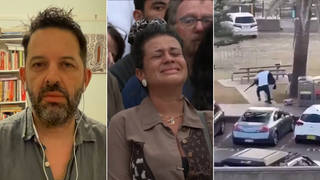
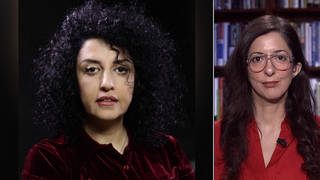
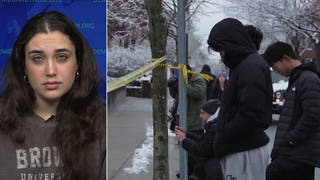
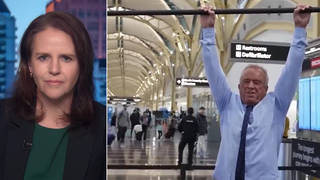
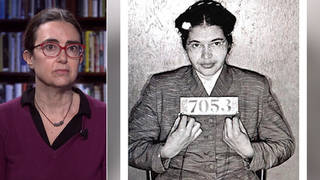
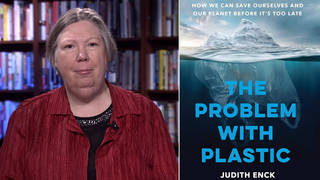

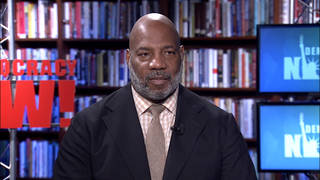
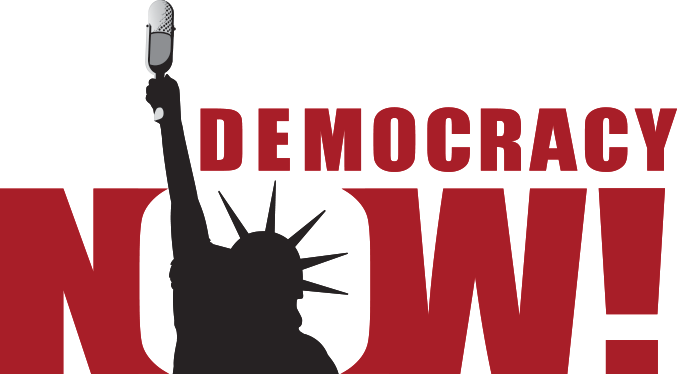
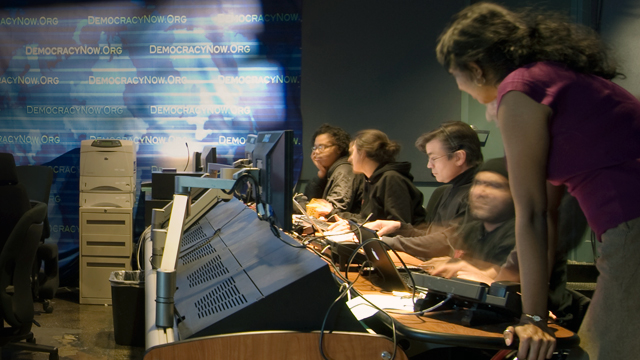

Media Options